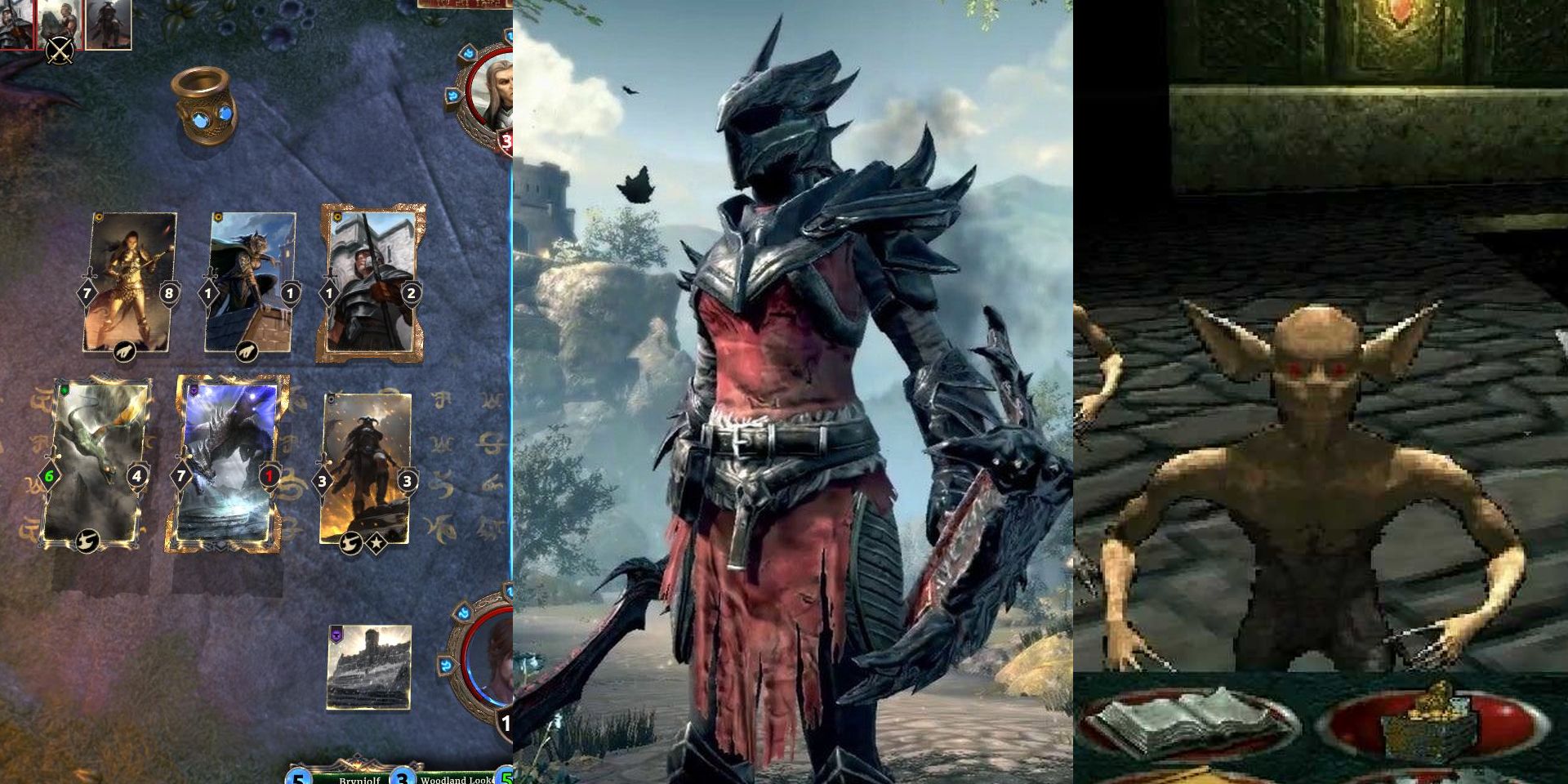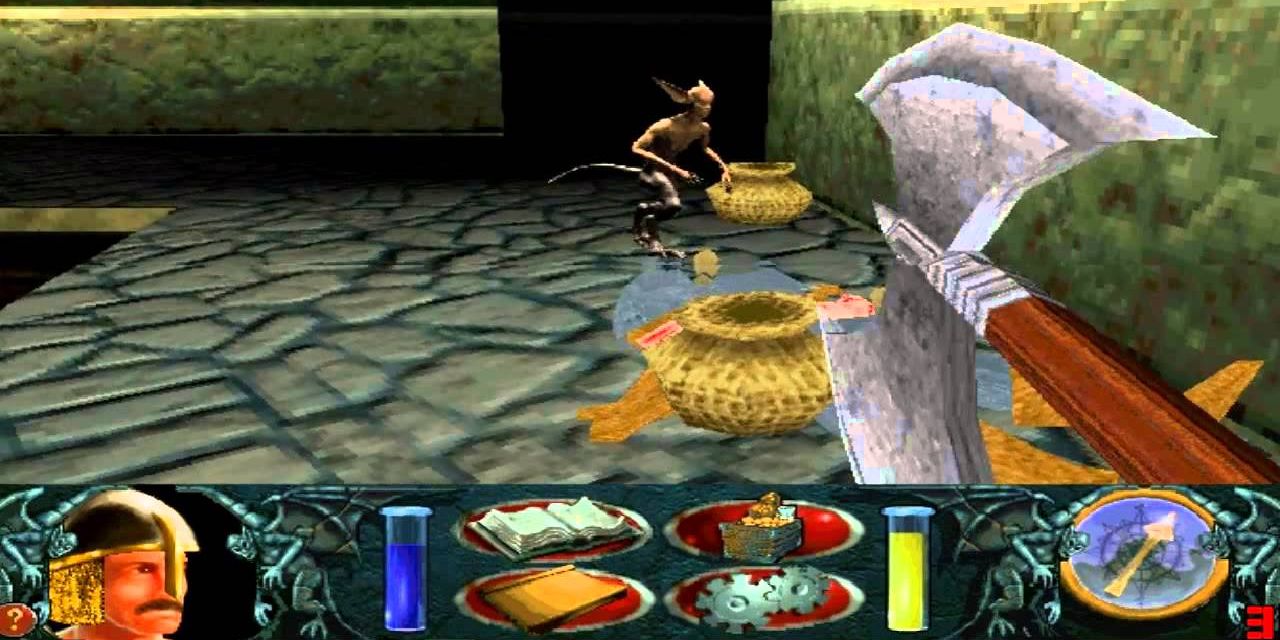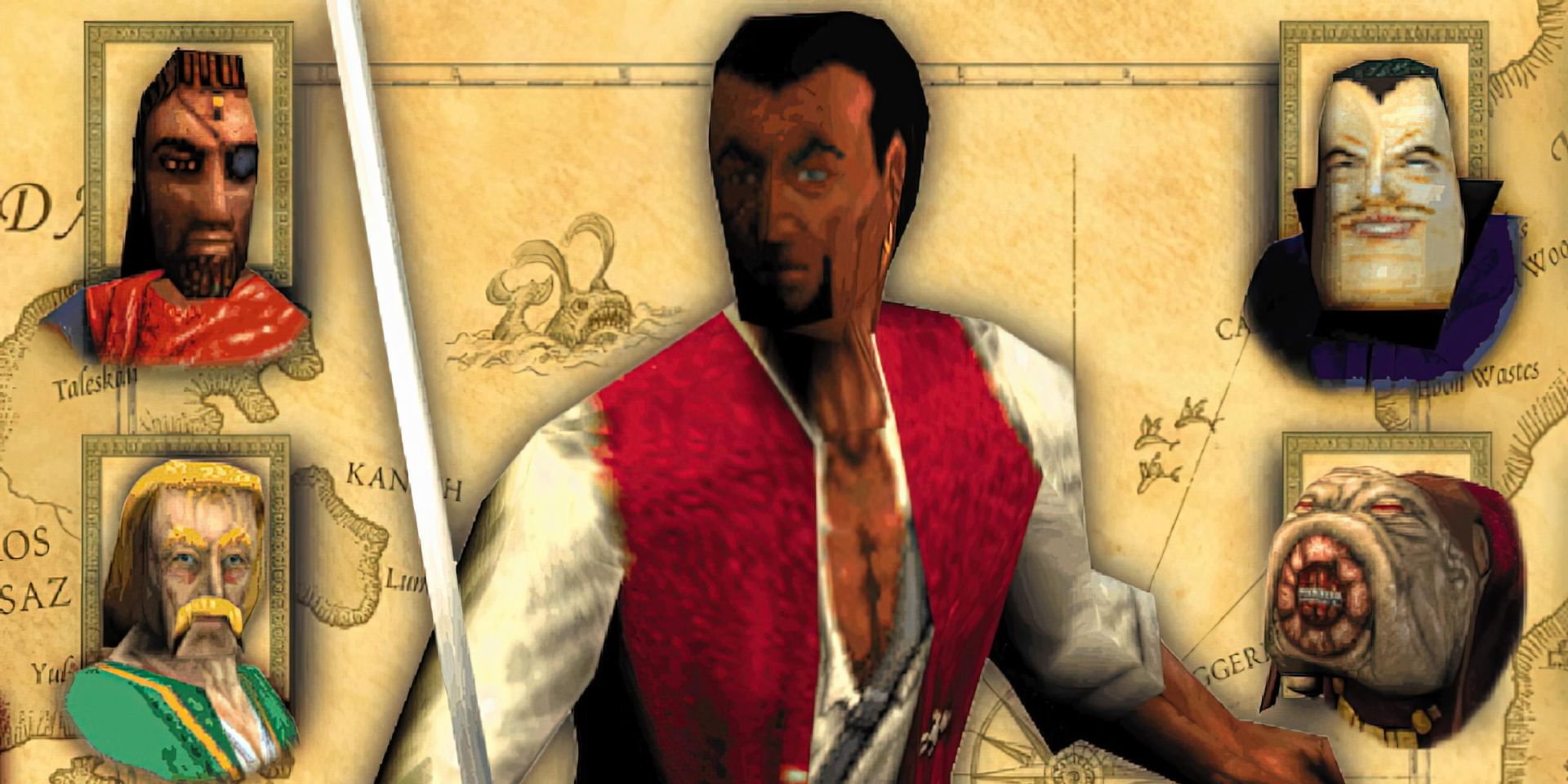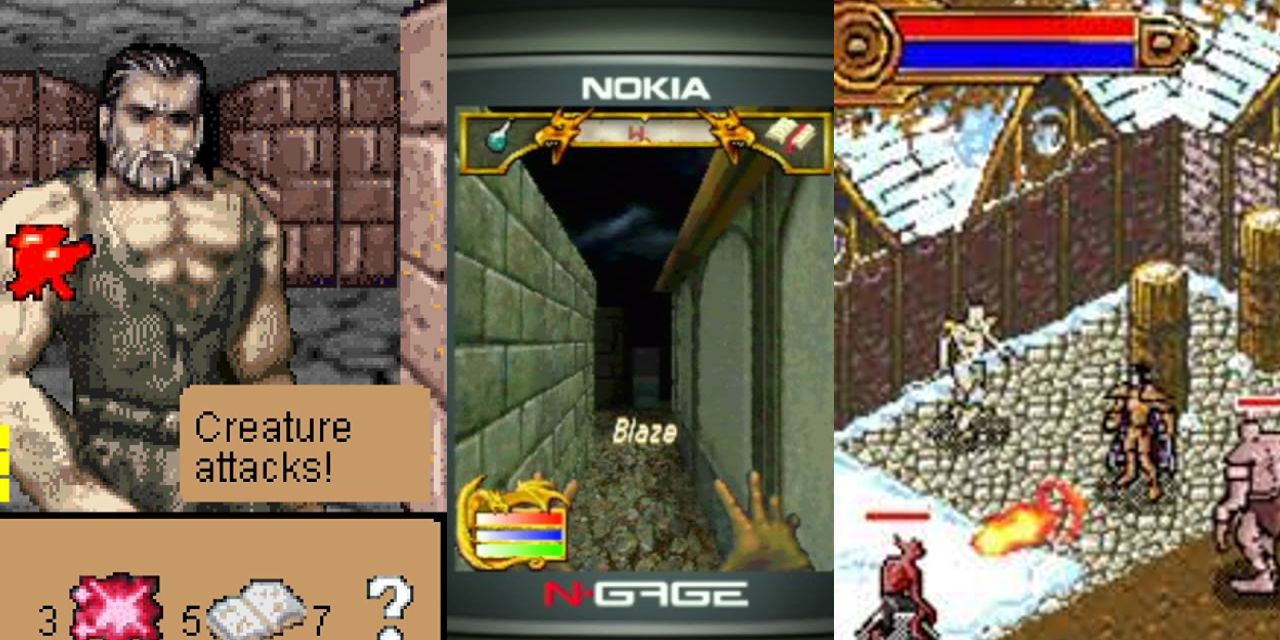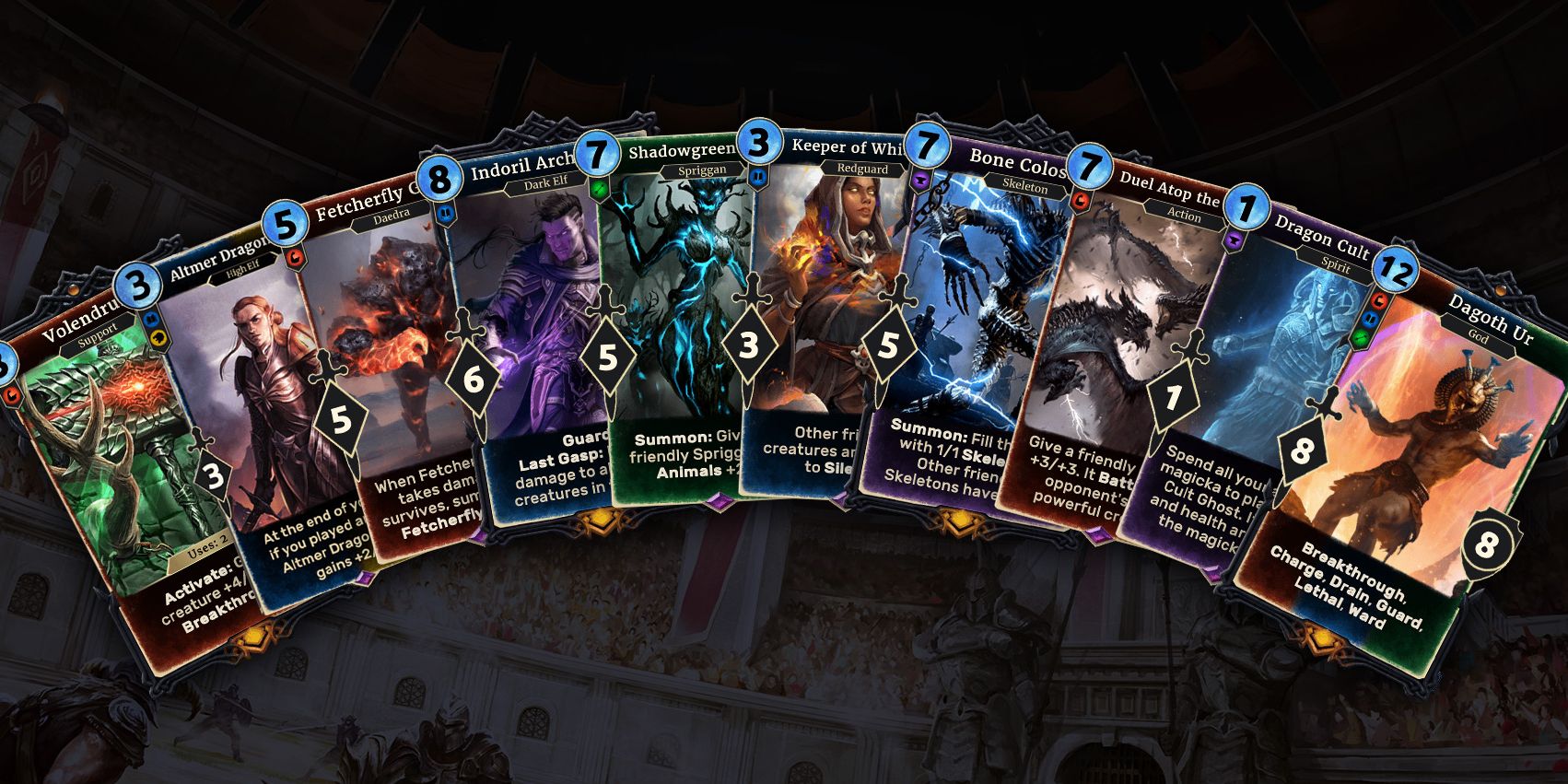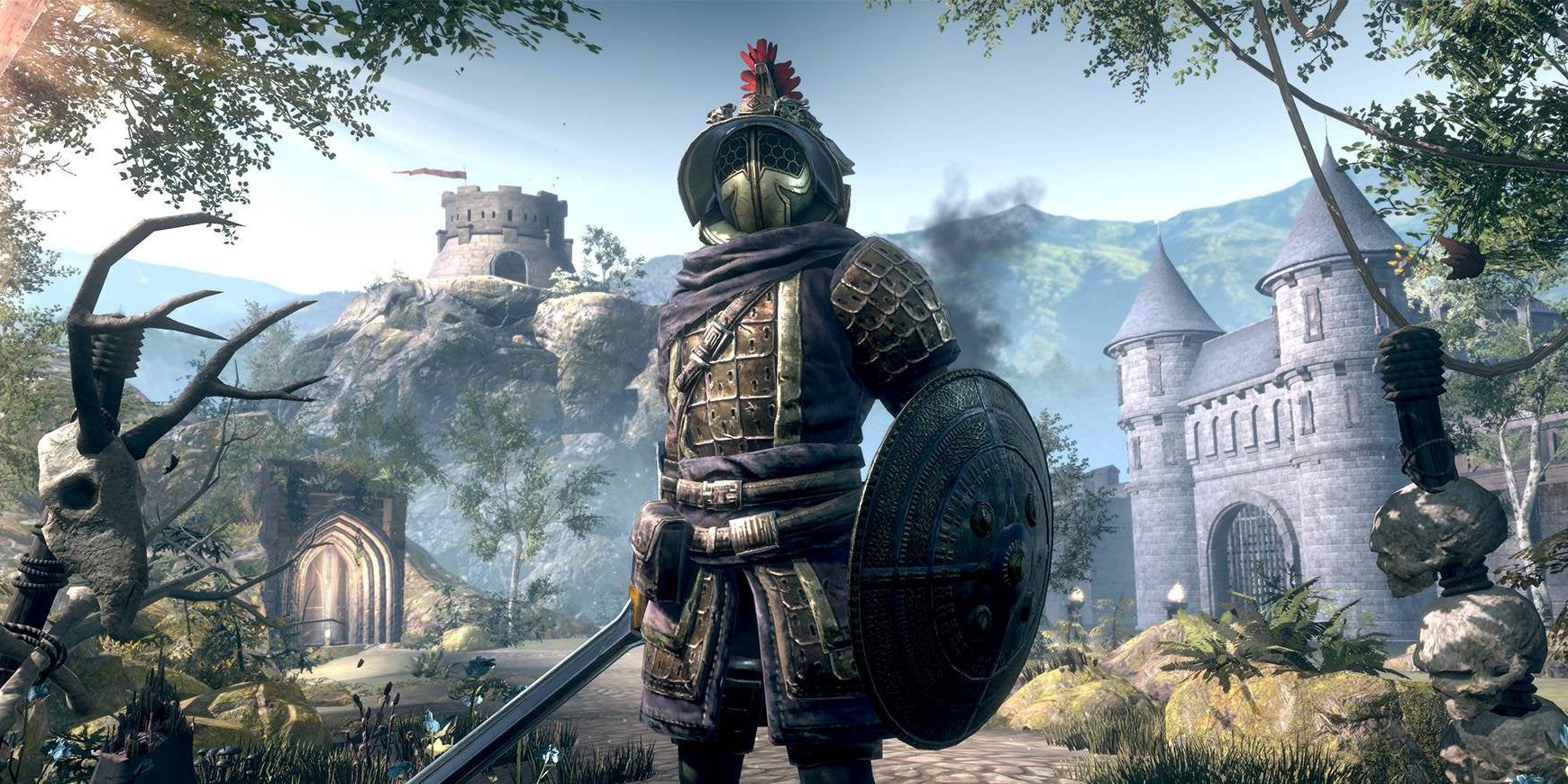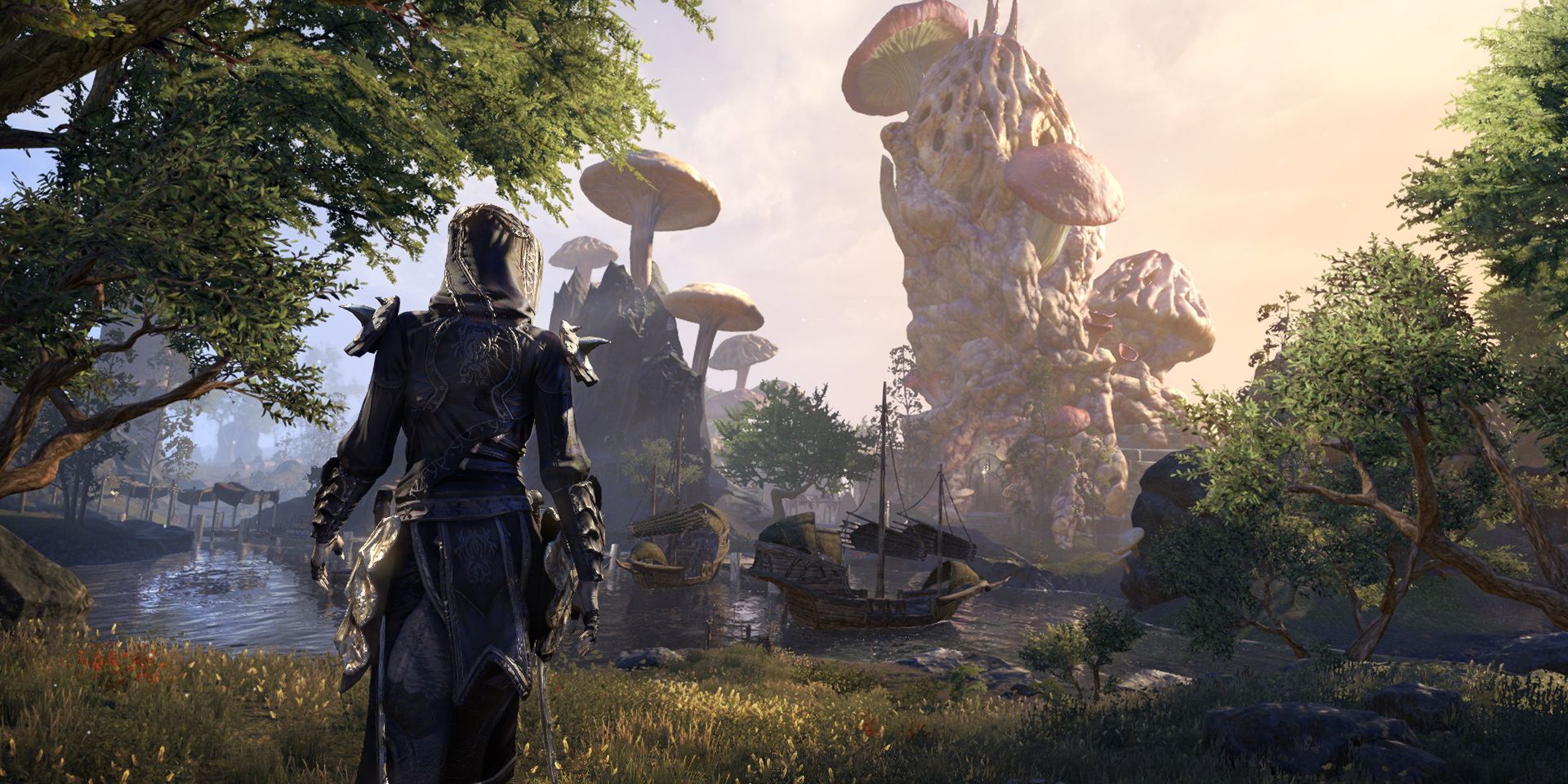The Elder Scrolls series is an iconic fantasy franchise that has five well-known mainline games, including Morrowind, Oblivion, and Skyrim, but even more less-well-known spin-off games. Some of these spin-off games are mildly well-known and enjoyed, but others are not so much. Because of the ridiculous amount of notoriety that the fifth mainline Elder Scrolls game gained, many new gamers were introduced to the franchise through The Elder Scrolls V: Skyrim. But Skyrim - compared to the rest of the franchise - is fairly new and Bethesda produced many other mediocre games before landing on a success. The Elder Scrolls franchise began in 1994 with The Elder Scrolls Arena, and given that the series is so old, it's unsurprising that there have been ups and downs through the years.
Beginning with The Elder Scrolls Arena, TES has been a staple for many fantasy game fans. The mainline games have released on most major platforms, and the spin-offs have released on all kinds of platforms. All of the Elder Scrolls games take place in Tamriel, across multiple eras in this world. Elder Scrolls buffs have hours and hours of content to absorb, as Bethesda has released not only games, but also a handful of books to fill in the gaps in the history of Tamriel.
While most of The Elder Scrolls games are action-adventure RPGs, and follow a similar open-world approach, not all of the spin-off games offer this freedom. In fact, at this point, many of the spin-off games are barely playable and offer only nostalgia and access to Tamriel history. Luckily, there are a few games that are worth sifting through the franchise timeline for. Each main Elder Scrolls title has some DLC or expansion content for it, that offers additional quests and locations for players to explore, but this article will focus on full games.
TES Spin-Offs Worth Playing - Elder Scrolls Legends: Battlespire
The first Elder Scrolls spin-off game, Elder Scrolls Legends: Battlespire (which introduced Daedric Prince Mehrunes Dagon) was originally designed as an expansion for The Elder Scrolls II: Daggerfall. While Battlespire does take place in the TES universe and offers most of the same race selections, the gameplay is entirely different from any of the other Elder Scrolls games. The Elder Scrolls Legends: Battlespire is an action-adventure dungeon crawler that takes place in a single multi-level dungeon and was the first TES game to introduce multiplayer. It takes an estimated 14 hours to run through the storyline for this game, which makes it one of the shorter TES games. Battlespire was created for MS-DOS and released in 1997, so the graphics haven't aged particularly well.
While some classic games offer charming sound effects and a compelling plot to make up for the lack of high-tech graphics, Elder Scrolls Legends: Battlespire lacks a solid story and just feels like a fever dream in which the player is being guided through a pixelated wax museum. Each character that the player comes across can be interacted with and spoken to, even if they are an enemy, which could be endearing but the strange movements and hyper-sexualization of every single female character in the game just make it feel forced. Battlespire might be worth watching gameplay of for those hardcore TES fans that want to catch up on what little lore the game has to offer, but it is probably better left in the archives.
The Elder Scrolls Adventures: Redguard Has A Great Story
The Elder Scrolls Adventures: Redguard follows in the action-adventure footsteps of its processors, but is the only TES game with a predetermined character and forced third-person view. Redguard features tons of rich TES lore that fans can enjoy, and its blocky graphics are actually kind of charming. Released in 1998, Redguard is set on the island of Stros M'kai and takes place during the Second Era, meaning its events fall between The Elder Scrolls Online and The Elder Scrolls: Arena. The Elder Scrolls protagonist in Redguard is Cyrus, a young Redguard who is looking for his missing sister and finds himself amidst a civil war taking place in Hammerfell.
Unlike the juxtaposition of pixelated backgrounds and smooth faces in The Elder Scrolls Legends: Battlespire, The Elder Scrolls Adventures: Redguard features chunky block graphics everywhere the player turns. Cyrus, the protagonist of the game, almost doesn't have eyes because of how blocky he is. But the intriguing plot and simple gameplay make up for it. Fans that really enjoy learning about Tamriel's history, or that just love silly RPGs, will probably enjoy Redguard for what it is - an old game that doesn't hold up super well but can be seriously nostalgia-inducing.
The Elder Scrolls Travels Mobile Games Improved Over Time
The Elder Scrolls Travels is a series of mobile games that had four installments and a planned fifth that was never released. The first title, Stormhold, released in 2003, drops the player in Stormhold prison with the objective of escaping. The second title in the Travels series is Dawnstar, which takes place in the same city players can travel to in Skyrim, and was released in 2004 for mobile phones.
These first two games in the Travels series feature no soundtrack and a landscape that looks and feels like a Windows 95 screensaver, making them both pretty unplayable. By the third installment though, Bethesda really stepped it up. The Elder Scrolls Travels: Shadowkey was released for the Nokia N-Gage and features a soundscape that is very similar to the main TES games, making it immediately more immersive. Because of the platform and technology available the game is of course a little clunky, and the graphics aren't high-def by any means, but they aren't awful either and the open exploration element feels very true to The Elder Scrolls vibe.
The fourth title in The Elder Scrolls Travels series is Oblivion, which was released for Java-enabled cell phones in 2006. Colloquially known as Oblivion Mobile, this last installment in The Elder Scrolls Travels series follows the same plot and mostly the same gameplay as the Elder Scrolls: Oblivion game except in worse graphics, and an isometric perspective. The controls for Oblivion Mobile are very slow and with no exclusive lore to keep it relevant, there isn't much point in revisiting this one. For fans that enjoy the nostalgia of old games, and want to experience this era of The Elder Scrolls, The Elder Scrolls Travels: Stormkey would be the best option from this series.
The Elder Scrolls: Legends Is A Free-To-Play Digital Card Game
The Elder Scrolls: Legends is the first in the whole franchise to really step away from the action-adventure RPG-style game, entering into a different genre completely. Legends is a free-to-play digital collectable card game much like MTG Arena, or Hearthstone, and was released in 2017. Players start off in campaign mode, which begins with a tutorial, and get to play through a fully fleshed out storyline that has 20 chapters.
Playing through the story mode allows players to gain levels and cards and build their decks to better battle other players or AI. Players don't have to complete the story before trying out other modes, but because Legends is a free game, campaign mode is the easiest way to get more cards. Legends offers unique gameplay with a split-board mechanic call "lanes". Players can play their cards in either the field lane or the shadow lane to differing effects. Hardcore TES fans will enjoy the new lore that Legends brings to the franchise, but players that are looking for another fantasy RPG may be disappointed.
Despite being put on hold by Bethesda in 2019, Elder Scrolls: Legends was generally well-received by the gaming community, and even won some awards. Development of the client and expansions are no longer in production, but the game's servers are still open and maintained, and Bethesda still engages the community with special events and promotions. For fans of digital card games The Elder Scrolls: Legends is definitely worth checking out, with the understanding that putting money into it might not be the best idea.
The Elder Scrolls: Blades Brought First-Person Action To Mobile
Going back to its roots of an action RPG, The Elder Scrolls: Blades is a mobile first-person game. Blades falls in the fourth era in The Elder Scrolls timeline, placing it before the events of The Elder Scrolls 5: Skyrim. The game is free-to-play and offers cross-platform play as well as cross-progression support, meaning players can begin a game on their phone and pick it up Elder Scrolls: Blades on their Nintendo Switch. Gameplay for Blades is fairly intuitive; players can engage in combat by tapping or swiping on the screen, or by using the virtual joysticks.
Reviews for The Elder Scrolls: Blades have been pretty mixed. The limitations of an app-based game mean that Blades is much more linear than other TES games, and doesn't offer players the chance to set out on their own and explore, which is something that fans have come to expect from a TES game. But Blades offers some new gameplay modes that fans can't get from other TES games. Abyss mode in Blades offers players a roguelike experience in which the player must try to get as far as they can in the endless dungeon, which is great for grinding experience. Overall the fact that The Elder Scrolls: Blades is free across all platforms means that the cost to try it out is pretty much non-existent, and it can be a great time killer for fans on the go.
The Elder Scrolls Online Is A Great Alternative To Skyrim
ESO feels more like a main Elder Scrolls game at this point, but it is technically a spin-off. The Elder Scrolls Online, commonly called ESO, was first released in 2014, but has since received five major DLC's, making it feel almost like a new game each time. ESO is a MMORPG and definitely received lots of criticism when it was first released. But over the years Bethesda has rolled out much-needed updates and the thriving community continues to grow. ESO is also free-to-play, but unlike Blades is not cross-platform.
Like with most MMORPGs, the gameplay for The Elder Scrolls Online is fairly non-linear. Once the player completes the tutorial and subsequent quest that goes with it, the game opens up into a huge world that can be easy to get lost in. ESO does a great job of capturing the endless feel that other The Elder Scrolls games have, while also providing a space to build a community and really get attached to a character. Elder Scrolls Online looks beautiful, just like Skyrim, but the richness of the world and abundance of quests is really what makes it worth playing.

